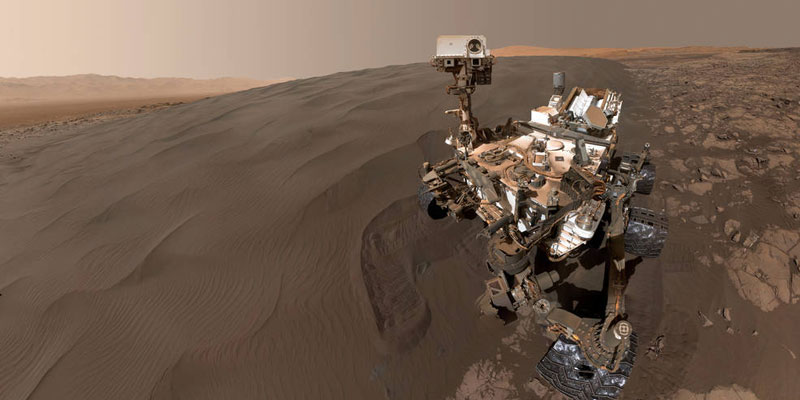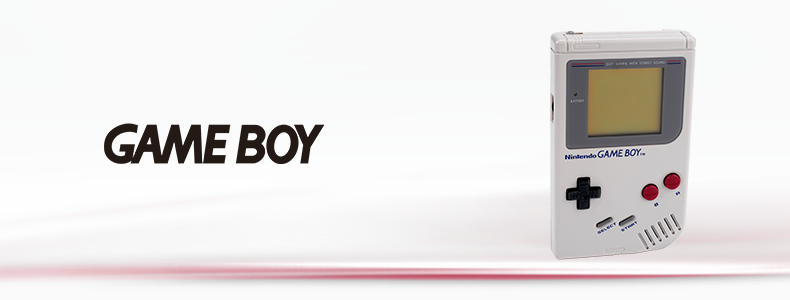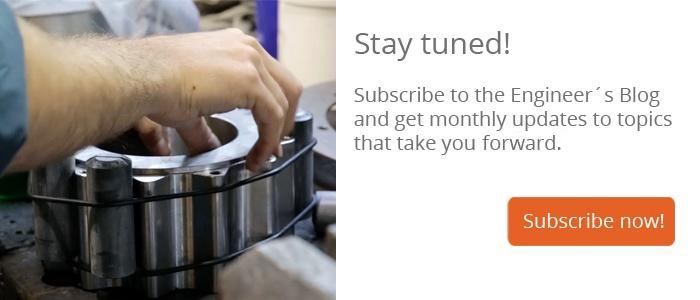Market Talk 3/19 - HANNOVER MESSE 2019, Robots in Space, Happy Birthday Game Boy, Basics of 3D Printing and a Hearty World Sensation

Typically, engineers focus on the smallest of details. From time to time, however, it is worth taking a look at the big picture – or even beyond it. What are the concerns of the market? What is being talked about and above all: where does the journey lead to? Here is our overview.
Review: Recap of HANNOVER MESSE 2019
The HANNOVER MESSE 2019 made the transformation of the industry tangible. The organizers gave a positive review of the five-day fair: artificial intelligence, robotics, the potential of 5 G - the next generation of mobile communication, lightweight construction and how increasing digitization will affect the future of work, were the topics that attracted more than 215,000 people to visit the tradeshow. This provided enormous potential to the approximate 6,500 exhibitors from all over the world who much appreciated the opportunity to reap the benefits. To be more precise: the organizers estimate that more than 6.5 million business contacts were made. But it was not only about getting in touch - it was also about sharing knowledge during a total of 80 forums and conferences.
So much for the bare figures. You can find further information, comments by the organizers, facts, pictures and videos here: After Show Report HANNOVER MESSE 2019.
Robots and artificial intelligence in space
An exciting story is told by the engineering company KUKA. What is it about? Of course, it is about their own core competence: robots. About artificial intelligence. And about astronomic vastness. Although astronauts are still flesh and blood today, robots in space have become indispensable. Sure: they are efficient and capable of coping with tasks that human beings cannot perform or that are far too dangerous. However, first and foremost, it is about research. Research takes place on Mars, in the international space station (ISS), and then back on earth. Innovative results include: cordless electric drills, GPS systems and hook-and-loop fasteners.
Read what the future will bring, the supernatural story in detail, what has happened since Gagarin and how artificial intelligence says hello from space.

Happy Birthday: The Game Boy has turned 30
Technically speaking, it is not that far developed as a robot, but it is extremely likeable: The Nintendo Game Boy. It was in space, too – the little handheld console that entered the world in Japan on April 21, 1989, is a proud 30 years old and accompanied the Russian astronaut Alexander Serebrov to the space station MIR in 1993. While Alexander was playing “Tetris” under weightless condition, the small hand-held hero circled the earth more than 3,000 times in 196 days. Who else can claim that of oneself?
The Game Boy’s triumphant march has not been interrupted and is still going on: up to today, the complete Game Boy family with its numerous updates has been sold more than 200 million times. Apart from “Tetris”, hits such as “Super Mario Land”, “Dr. Mario” or the role playing duo “Pokémon Red” and “Pokémon Blue” have greatly contributed to this success. Learn more about this remarkable anniversary and amazing story at Business Insider.
The basics of 3D printing and a hearty world sensation
3D printing is also known as Additive Manufacturing (AM), Generative Manufacturing or Rapid Prototyping. But no matter which name is eventually used for this manufacturing technology, it has become indispensable in industry and many related sectors. It even plays a revolutionary role in medical engineering: the professional journal ‘Advanced Science’ has recently reported that a research team from the University of Tel Aviv succeeded in producing a little heart from human tissue by using a 3D printer.
The basic principle of 3D printing can be explained in a few words: In contrast to subtractive manufacturing in which material is removed by milling, turning, drilling or electrical discharge machining, additive manufacturing is used to create an object by adding, applying or layering material. Although this technology has mainly been used for plastics to date, 3D metallic printing is also experiencing extremely rapid growth.
It is a thrilling topic which will surely reveal lots of surprises in the future. Visit the independent online portal (3Printr.com), a magazine solely dedicated to 3D printing technology, and learn more about this subject, e.g. the evolution of 3D printing.


Comment